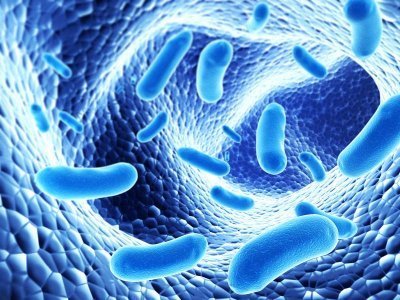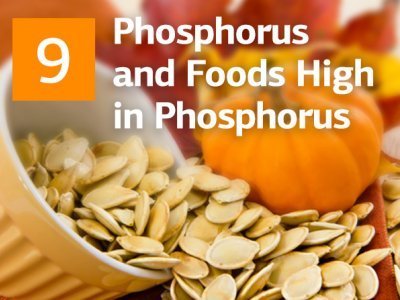| Amount Per 108 g | |||
| Calories | 210 Kcal (879 kJ) | ||
| Calories from fat | 99 Kcal | ||
| % Daily Value* | |||
| Total Fat | 11g | 17% | |
|---|---|---|---|
| Cholesterol | 35mg | 12% | |
| Sodium | 580mg | 24% | |
| Total Carbs | 17g | 6% | |
| Protein | 12g | 24% | |
* Percent Daily Values are based on a 2000 calorie diet. Your daily values may be higher or lower depending on your calorie needs.
Find out how many calories should you eat.
Ingredients And Nutrition Overview
Best
choice Good
choice Poor
choice Avoid
it!
choice Good
choice Poor
choice Avoid
it!
-
WeightWatchers Points: 5.1, PointsPlus: 6, SmartPoints: 5
WeightWatchers Points are estimated by carbohydrates, fats, protein and fiber in product. They are not an affirmation of better quality or nutritional value of the product or its manufacturer. Only way to count for dieters. Less points are better.
Read more at Weight watchers diet review -
We have incomplete data on this product
Unfortunately, we don't seem to have all the information we need in order to grade this product. Our assessment includes the nutrients, calories, serving size, and ingredient list.
-
More than 20% of daily saturated fat
Not all fats are created equal. Saturated fats are the ones responsible for bad cholestrol buildup in our blood vessels, as well as contributing to coronary disease.
-
For dieters: FoodPoints value is 6
* FoodPoints are calculated by Fooducate based on fats, carbs, fiber, and protein. They are not an endorsement or approval of the product or its manufacturer. The fewer points - the better.
-
Highly Processed!
This product is highly processed. If you'll take a look at its ingredient list, you'll discover new words to add to your vocabulary. Many of theses ingredients are required to increase the shelf life of the product and improve the flavor that disappears when food is not fresh.
-
Contains MSG-like ingredients
People sensitive to MSG may also be sensitive to MSG-like substances. These are glutamates or chemically similar items added to improve a product's taste. Here is a short list of common MSG-like substances (see our blog for more): - Yeast extract - Autolyzed yeast - Hydrolyzed proteins ---- Source: Scopp AL. MSG and hydrolyzed vegetable protein induced headache: review and case studies. Headache. 1991;31(2):107-10. Questions and Answers on Monosodium glutamate (MSG) http://www.fda.gov/food/ingredientspackaginglabeling/foodadditivesingredients/ucm328728.htm Natural Flavorings on Meat and Poultry Labels http://www.fsis.usda.gov/wps/portal/fsis/topics/food-safety-education/get-answers/food-safety-fact-sheets/food-labeling/natural-flavorings-on-meat-and-poultry-labels
-
Duck feathers & human hair in here?
L-cysteine, found in this product, is an additive made from duck feathers or human hair. It is used as a dough conditioner and to extend shelf life. There are synthetic versions made from non-animal parts - these are more expensive, but well worth it for consumers who do not want duck feathers or human hair in their food. Check the label. Or better yet, avoid this needless additive. Choose fresh baked breads that use natural preservatives, if any at all. If you have a problem with bread spoilage, freeze your bread and toast or thaw to reheat.
-
Watch the cholesterol...
While cholesterol has been shown to be less harmful than once believed, you should not consume more than 300mg a day. This product contains more than 10% of your daily cholesterol intake. If you're on a low cholesterol diet, make sure you pay attention to portion: 10% of your daily allowance can quickly become 50% when a hamburger turns into double cheeseburger. Trouble sticking to daily goals? Try limiting your meat, cheese and dairy intake to one item per meal and avoid items with multiple sources of cholesterol (like chicken with ham and cheese, breakfast sandwiches with sausage and cheese or bacon cheeseburgers). Opt for items like BLT's, chicken sandwiches with veggies and meatless pizza. Choose water and not milk for your main mealtime beverage.
-
Contains calcium propionate. Learn more
Calcium propionate (or calcium propaonate) is a preservative that inhibits mold and bacterial growth. Considered safe, but in the early 1990's it was linked to attention deficit disorder in children.
-
Learn about Xanthan Gum, found here
Xanthan gum is an emulsifier. It helps ingredients blend more effectively and stay blended while waiting on a shelf. For example – water and oil mixtures, as well as bits of spice in a salad dressing. Xanthan Gum is made by fermenting corn sugar with a bacteria, Xanthomonas campestris. It’s the same bacteria that creates black spots on broccoli and cauliflower. The result is a slimy goo that is then dried up and ground into a fine white powder.
-
Calcium chloride and waste reduction...
Calcium chloride is thought of as OK for your health, though some advise that it could cause slight stomach irritation. When used as an additive in products like jellies or cheeses, it causes the food to firm up. When used in tomato-based products it prevents disintegration. It also adds a tiny bit of saltiness without adding sodium. This additive is a by-product of The Solvay process. In this process, carbon dioxide is mixed with table salt and ammonia to create soda ash (or potash) and other products, like baking soda. One of the problems is that this process produces waste - a lot of waste. As a result of this and other technological advances, the last Solvay plant in the US closed in 1986. But the process continues in other parts of the world. While more and more calcium chloride is removed from the waste in settling ponds or dumped directly into the sea, the issue of what to do with this by-product is still relevant. By using calcium chloride as a food additive, manufacturers are actually reducing the amount of waste that is put back into the environment. Whether this is a "reuse" effort you want to be a part of is up to you . . .
-
Sodium Aluminum Phosphate
This product contains sodium aluminum phosphate. Food manufacturers will tell you that this additive is not a problem. And yes, normally, people will have some amount of aluminum in their body by means of inhalation, ingestion or dermal contact. The Department of Health and Human services says most this aluminum will leave your body quickly through feces, and the small amount that enters your bloodstream will leave via urine, but . . . they also say that excess aluminum can cause problems. Some research has implicated aluminum with Alzheimer's and research both supports and refutes this. Doctors blame aluminum of exacerbating the effects of kidney disease and causing bone or brain diseases. Bottom line: There's no tangible benefit of consuming products with sodium aluminum phosphate. To err on the side of safety, particularly with products you consume everyday, choose ones without added aluminum.
You Might Also Like
% RDI of Main Nutrition Facts
11%
of RDI* (210 calories) 108 g
-
Cal: 10.5 %
-
Fat: 16.9 %
-
Carb: 5.7 %
-
Prot: 24 %
-
0%25%75%RDI norm*
Calories Breakdown
- Carbs (31.6%)
- Fat (46%)
- Protein (22.3%)
Get Your Recipe of Health!
Follow RecipeOfHealth on Facebook!












Add your comment